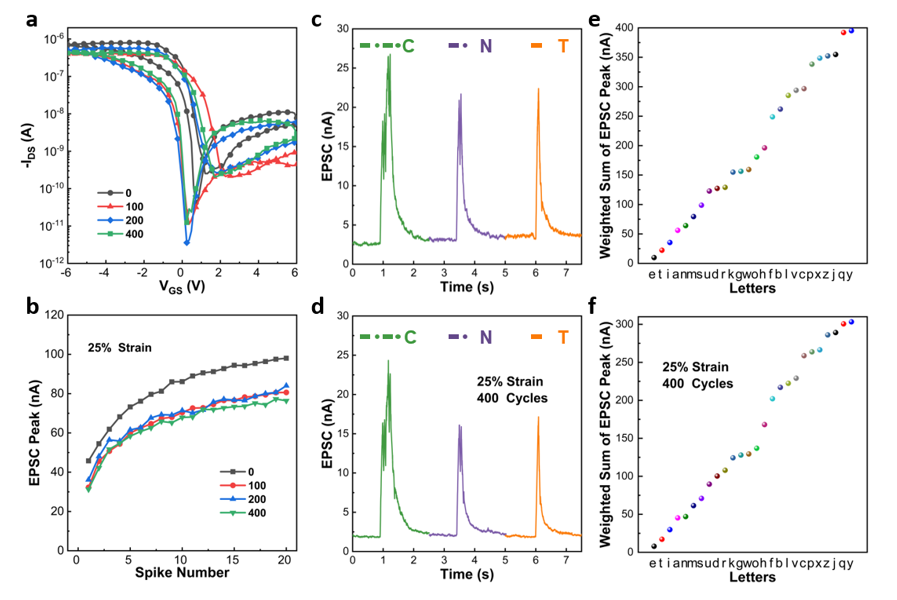近期,本课题组张敏老师和黄巍宏同学分别以通讯作者和第一作者在材料科学领域国际知名期刊Carbon(SCI一区,2021年IF=9.594)上发表了题为“Intrinsically stretchable carbon nanotube synaptic transistors with associative learning ability and mechanical deformation response”的研究成果。
本文首次实现了基于聚氨酯脲电介质的本征可拉伸碳纳米管突触晶体管。 突触晶体管成功模拟了兴奋和抑制过程中的短期突触可塑性,实现了对莫斯电码方式编码的英文字母的特定响应,并展现出联想学习能力,实现了对巴甫洛夫经典条件反射实验的模仿。此外,本文进一步研究了机械形变对突触晶体管突触可塑性的影响,结果表明突触可塑性可以通过机械变形进行调节。该工作提供了一种新的实现可拉伸神经形态器件的方法,显示了构建可拉伸神经形态电子系统的潜力。
Stretchable synaptic transistors with the ability to emulate multiplexed neural signal transmission is an important step toward mimicking complex brain activities in bionic memory sensors, intelligent soft robots, and skin electronics. The reports about stretchable artificial synaptic transistors are limited and further exploration is urgently required. In this work, intrinsically stretchable carbon nanotube synaptic transistors (IS-CNT-STs) with poly (urea-urethane) dielectric have been realized. The synaptic characteristics and the synaptic mechanism have been analysed. Synaptic functions of the biological synapses including excitatory and inhibitory behaviours, short-term plasticity, and filtering characteristic are successfully emulated in the IS-CNT-STs. Moreover, the IS-CNT-STs have exhibited excellent mechanical stretchability even after experiencing large stretching deformation. After stretched by 50% strain, and even after 400 stretching cycles by 25% strain, both the transistor characteristics and the synaptic functions remain correctly. The realized IS-CNT-STs possess low operating voltage, multiple synaptic plasticity, and mechanical deformation response. The demonstrations indicate their capability to work in the stretchable artificial neuromorphic systems.
文章链接:

